I looked out the taxi window into darkness, eager to catch my first glimpse of Maine. Shadows of trees pressed in on both sides of the car. The driver was a stringy, grizzled older man, a Mainer going back generations. “As my mom used to tell me, this is God’s land,” he said, kicking off the conversation, and in the backseat I froze, immediately uneasy.
I had been offered a spot in an artist residency in Maine and I had accepted eagerly, excited to have a stipend and a studio space with room, board, and meals provided. The residency was located in the middle of the Maine Highlands, an area I was unfamiliar with. I had never been to Maine before, and what little I knew of it was from paintings — Lois Dodd, Marsden Hartley, Fairfield Porter — all landscapes. The residency would be my chance to focus exclusively on my work and to inject new energy into my studio practice; perhaps to assimilate something ineffable into my work from the storied beauty of Maine, as other painters had.
Despite my excitement, I was slightly nervous about relocating to a small rural town in a red state for several weeks. I had traveled recently to New York City, a place I once lived and felt familiar with. Prior to traveling, my parents urged me to be careful because of the recent rise in violence against Asian Americans. I packed a large-brimmed hat, hoping it would cover up my black hair. With the hat, my face mask, long-sleeved clothes, and sunglasses, I only had the slightest sliver of skin showing. I hoped I was disguised enough, racially ambiguous, and therefore not a target. However, the brim of my hat flopped down and cut off my peripheral vision, making it impossible to see a hypothetical attacker. I eyed the other girls on the subway, enviably bare-headed and unafraid, so I too took off the hat and decided to step confidently about the city. Better to be able to see than to hide.
Within half an hour of walking around with my regained confidence, I met an older Asian man, a subway worker who answered a question I had about operating the new ticket machines. As I thanked him and prepared to walk off, he met my eyes and warned me to be careful. I knew what he was alluding to. His words echoed my parents’, and his age and the way he carried himself also reminded me of them.
There was an unspoken kinship in that look we exchanged, an understanding of what it meant to walk around, exposed to the world. He had read the confidence in my stance, my possibly misplaced confidence in thinking I would fit in, surrounded by other people of color in a liberal city. His eyes warned me that my faith in being read as American and not as other might be naive, that yes, the way I looked did make me a target. I put the hat back on, covering my face once again. I wondered how I would fare in rural Maine, if I was concerned for my safety in a city as large and diverse as New York.
“As my mom used to tell me, this is God’s land,” the driver said, nonchalantly gesturing to the blur of landscape outside the windows. I didn’t know how to read his opening statement. Did he mean it as God’s land, because of the beauty and splendor of it, or God’s land, as in Christian, white, and not particularly welcoming to someone who isn’t? Was the statement a subtly coded warning about this new place I was traveling to, or a warning about his own views?
The rest of the ride progressed uneventfully. He dropped me off in the dark in front of the unlit residency house, in a town so remote that he, a lifelong Mainer, had to stop at the gas station to ask for directions. Though our conversation ranged from his own history to financial hardships wrought by Covid on his community and family, the strangeness of how he opened our conversation with “God’s land” caused his remarks to continually come back to me over the course of my stay, coloring the rest of my time in Maine.
On my first morning at the residency, the light came gradually, the air was crisp and rich, and I was deliciously alone. Main Street was busy with what I imagine qualified as traffic: large shipping trucks zooming by on their way to somewhere else. The foot traffic in town was minimal, but the general store was bustling, filled with people stopping by for coffee or a sandwich. A church stood in a place of pride by the town’s lake, only a block away from Main Street. Rectangular, with a singular spire, deep brown-red in color with white trim, it looked Puritan and strong in its orderliness.
Around the church, the land had been cleared. The building stood tall against the short grass, dominating the plot. The taxi driver’s words came back to me — God’s land. And indeed, the little church looked like it ruled the area, its spire the tallest thing in town. Yet, it was oddly empty. When I tried the door, it was locked. Over the course of the residency, I didn’t see a single person enter or exit.
As I settled into my residency, I developed a routine — breakfast from the general store, reading, then painting for a few hours, followed by lunch, more painting, and then a walk. The town itself was small enough that it mostly consisted of the general store, studios, the art center, and a few antique shops. It took no more than ten minutes to walk the length of Main Street, and the house I lived in was perhaps five minutes away from my studio. There were a few other artists there with me, but I spent most of my days alone in the studio, looking over Main Street in one direction and the church in the other.
Though I was there to paint, I was also there to explore and think, to walk, look around, and take in the new landscape. I was deeply curious about the town, both the land and the people, because it was all so different, the opposite end of America from my home state. It felt daring to explore, to walk alone in the woods and to talk to strangers. On my walks through town, I would run into fellow artist residents, but for the most part the sidewalks were empty — everyone else commuted in their cars. It was a delight to sometimes stumble upon other people on the quiet trails, to strike up short conversations, to learn about their lives and thoughts. Perhaps it was also a novelty, after spending so many months sequestered in a house during the pandemic. In retrospect, however, I came to understand I was probably testing people’s reaction to me.
What is God’s land, and which God? It was the question that stayed with me as I wandered the town, seeking to understand what the taxi driver meant. I assumed he referred to a Christian God, the exact concept of which was alien to me. I was raised loosely Buddhist in a Texas suburb full of Methodists and Baptists. My school friends went to church, listened to the Christian radio station, and attended Bible camp, but for me religion meant visiting the temple once or twice a year. Their God was a constant background noise, referred to on the backs of T-shirts or over the radio, but it also seemed to be the default American God. I always assumed we referred to him when we recited the pledge of allegiance for both the state of Texas and the United States every morning at school, as required by state law, “…I pledge allegiance to thee, Texas, one state under God” and “one nation under God.” At the time I never thought much about it, mumbling along out of habit, but now I wondered why I grew up with that particular assumption and how I fit into it, with my own God, or really, lack of a God.
The phrase “God’s land“ also sounded old-fashioned, almost like a higher calling of a place to go toward. Linking the land with God made it mythical, as if the land were blessed with riches and unbelievable beauty. That idea, of a fabulously wealthy land to aspire toward, reminded me of the way they taught Manifest Destiny in my public school history classes. My textbooks touted westward expansion as a positive thing, almost a patriotic obligation, of going west and finding the next land of riches. Those who lived on the land to begin with were glossed over as people standing in the way of progress, and their stories were written over by textbook tales of gold rushes and land grabs. The landscape was dug up and built over; God’s land turned commercial.
In my own hometown suburb, everything was so new — forests were bulldozed over to be covered with acres of houses and strips of green lawns. It was impossible to imagine that the place I lived used to look any different from its modern iteration, as the traces of agriculture, wetland, and pine forest had been so thoroughly erased. In contrast, here in Maine, the forests were still very much present, and the trees that had seen generations of people were still alive, keeping watch.
Maine’s land itself felt wealthy, blessed as only God’s land could be with resources available for the taking. Trucks rolled steadily down Main Street, carrying cut pine trees bound for lumber mills. Within a mile of my studio were two deep and transfixing slate mines, mysterious pits in the land that were once an economic backbone of the town. Water pooled at the bottom of the pits, masking unsightly scars and dumped junk, reflecting back only the sky. It had something of the holy, washed and made new, and turned into a miniature lake set off by the chiseled black walls. I couldn’t help but be drawn to the quarries, to look into the water. I had a strong desire to submerge myself, to sink into this deep space and to float, surveying the depths from above.
Despite the wealth of resources, there was still a keen sense of struggle. The taxi driver told me the story of his family, how the types of jobs his mother and grandmother used to work were outsourced to China and no longer exist. I wondered what he thought of me, tellingly Asian from my coloring, somehow tangentially related to the reason for all the disappeared jobs. As I went on my daily walks, I could see that his story had played out for other families in the area too. On side streets, houses looked decidedly neglected, objects were piled in front yards, and windows were boarded over instead of repaired.
I passed a house, offered for $50,000, with a truck parked in front of it which was also for sale, along with everything else filling the yard. It was obvious the owner had cycled through various jobs from the variety of machinery on display. I wondered if the owner of the house had simply left and hoped to one day get a phone call inquiring about the property.
On another walk, I found what I later realized was the old furniture factory — the last large employer in town. It had prominent “do not enter” signs, as well as a delivery schedule for trucks, posted at the entrance of the building. The warehouses still stood, but the whole complex was eerily quiet for a weekday. It looked as if time had frozen for the factory. I had never spent so much time in a place where economic depression was so apparent, where the unsympathetic forces of jobs gone elsewhere left so many visible scars. And I understood, just a little, why the nostalgia for an old America — the America of “Making America Great Again” — had so much power in the 2016 election. The remnants and the memory of a prosperous past were everywhere: in the defunct slate mines, in the closed factory. Parts of the land were now used up, and failed ventures were just left behind. Holes in the ground were filled by rainwater, reflective and insubstantial compared to the great weight of the missing stones of the earth.
Despite worrying about my reception, I was met with welcome in most of my interactions with the town’s residents. They were friendly, said hello, and were happy to have casual conversations. This generosity surprised me. There was a feeling of community, like that of a small college campus where everyone knows everyone. It was fall hunting season, and oftentimes when I picked up breakfast from the general store the hunters would be swarming with excitement. As I waited in line to pay for my food I overheard anecdotes about favorite hunting spots, how many pounds an animal weighed, or how large a set of antlers were. There was a general buzz that tied everyone together, from the deli boy behind the counter to the cashier, and the group’s camaraderie was so pronounced that it swelled to even include me.
At some point, someone extended a casual invitation to accompany them on their hunting trip so I could see a moose; talk of game and guns felt unthreatening in a way that surprised me. It seemed to tie people further to the land, to their neighbors, as information was exchanged about who had what to share, and thus to their community. Perhaps the feeling of being tied together by mutual need, the fundamental practice of hunting to eat, was a way of creating a sense of belonging.
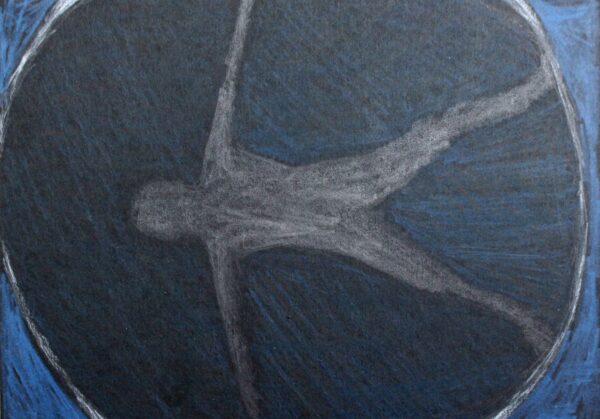
Renee Lai, “Floating, Maine,” 2021, colored pencil, graphite, and white charcoal on black paper, 6 x 8 inches.
As my residency came to a close, I reflected on my time in Maine, God’s land. I thought about the hope and implied utopia that could also be found in that phrase, how it could be a beautiful way to describe a place, reverent even. That it could be a way to live with the land, to take and give as best as you could. In this town and state where I didn’t expect to be welcome, God’s land bound everyone together, including me. It bound us by our mutual delight in its beauty, by our reliance on its bounty, by giving us common ground to open our conversations.
In this era of deepening grievances with political parties and worsening climate change and social inequality, I have felt many moments of despair over the fabric of the government and the democracy that I once thought knit us together. It had seemed impossible to me, after the tumult and strife of the pandemic, to imagine a place and time where I would feel healed, if only temporarily. God’s land, with all its complexities, reawakened my hope that America might be something whole again. There actually might be something aspirational and holy about this constitutional republic, and, by inhabiting the same country, we can come together once again, because we all live on God’s land.


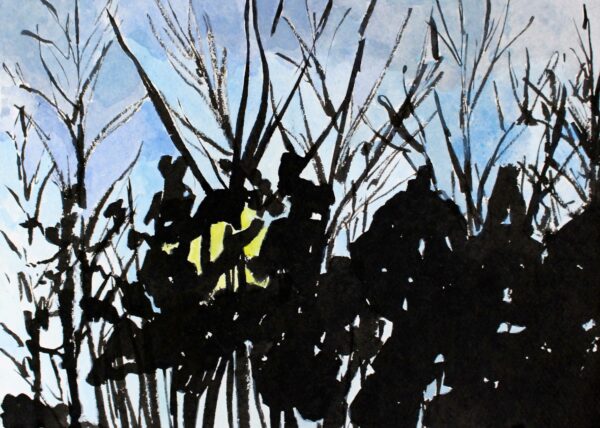
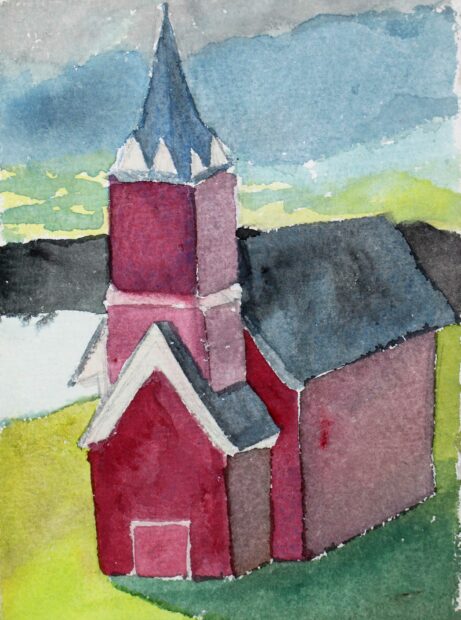
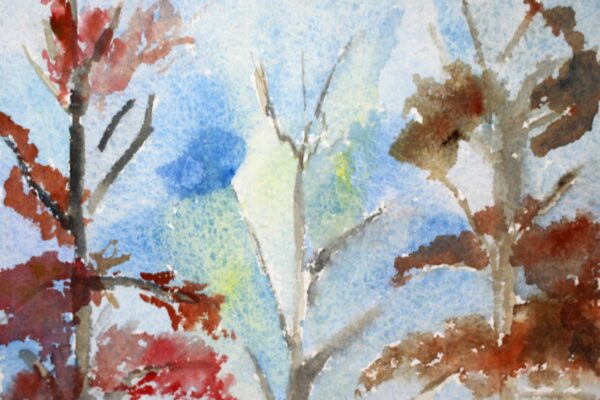
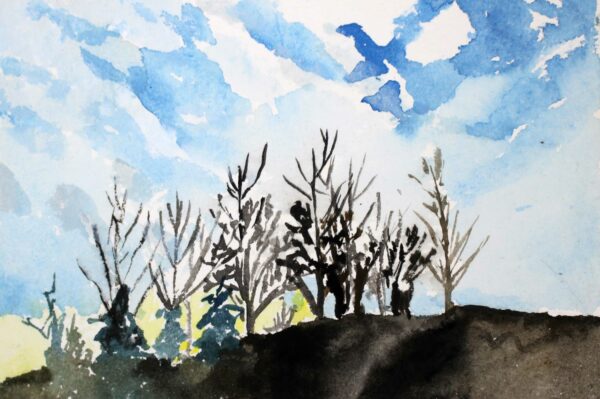

2 comments
Beautifully written. The lens (“God’s land”) shares such a different perspective than how I approached Maine last summer. The contrast of the Houston-Austin sprawling metropolises to Maine’s towns and forests is incredible. Nature feels much more present there. It much easier to feel disconnected from the land and its ecology here.
Well done. I really appreciate the honesty imbued in your comments, both about the town and it’s people, and also about yourself. My experience has been that when we approach new or different people and experiences with curiosity and an open heart, our red state/blue state preconceptions dissolve and are replaced by a sense of community and commonality. Thank you, thank you!